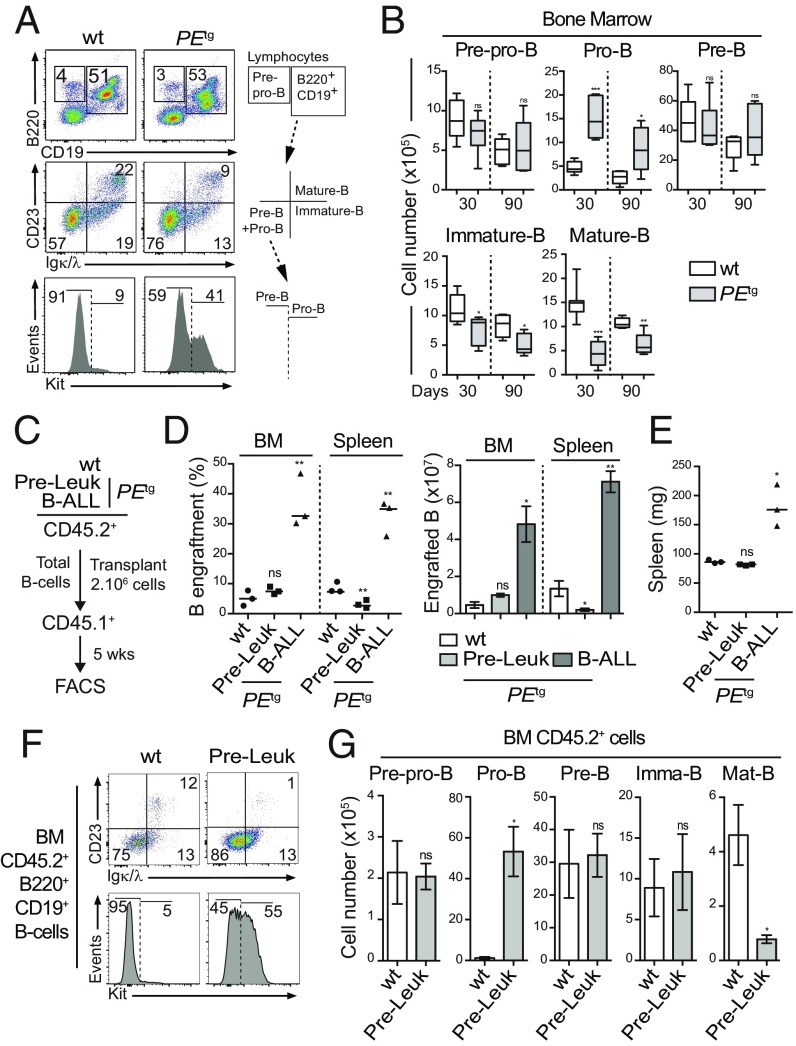Fig. 3.
Pro-B cells are expanded by PAX5-ELN at a preleukemic phase. (A and B) Preleukemic PEtg pro-B cells exhibit an aberrant expansion potential in vivo. Immunophenotyping of BM cells from 30-d-old WT and PEtg mice was performed using B220, CD19, CD23, Igκ/λ, and Kit markers (A, Left), and a gating strategy was applied to discriminate B-cell subpopulations (A, Right and SI Appendix, Fig. S2). Absolute numbers of pre-pro-B, pro-B, pre-B, immature B, and mature B cells from the BM of 30- and 90-d-old WT and PEtg mice were calculated (B; n = 5 to 8 mice per condition). (C–E) Preleukemic and leukemic PEtg B cells exhibit different engraftment potentials. Total B cells from the BM of preleukemic and B-ALL PEtg mice (CD45.2+) were purified and i.v. transplanted in recipient mice (CD45.1+, n = 3, 2.106 cells per mouse) pretreated with 30 mg/kg busulfan (C). The same number of total B cells from the BM of WT mice was transplanted in parallel as control (C; n = 3). The proportion (D, Left) and absolute numbers (D, Right) of donor-derived (CD45.2+) B cells in the recipient BM were calculated 5 wk after transplantation. Spleen weights of engrafted mice were compared (E). (F and G) Preleukemic PEtg pro-B cells expand after transplantation. Immunophenotyping of engrafted B cells (CD45.2+B220+CD19+) in the BM was performed (F), and absolute numbers of donor-derived (CD45.2+) preleukemic pre-pro-B, pre-B, pro-B, immature B, and mature B cells in the recipient BM were calculated (G). Error bars represent standard deviations, ***P < 0.0005, **P < 0.005, and *P < 0.05; ns, nonsignificant.

